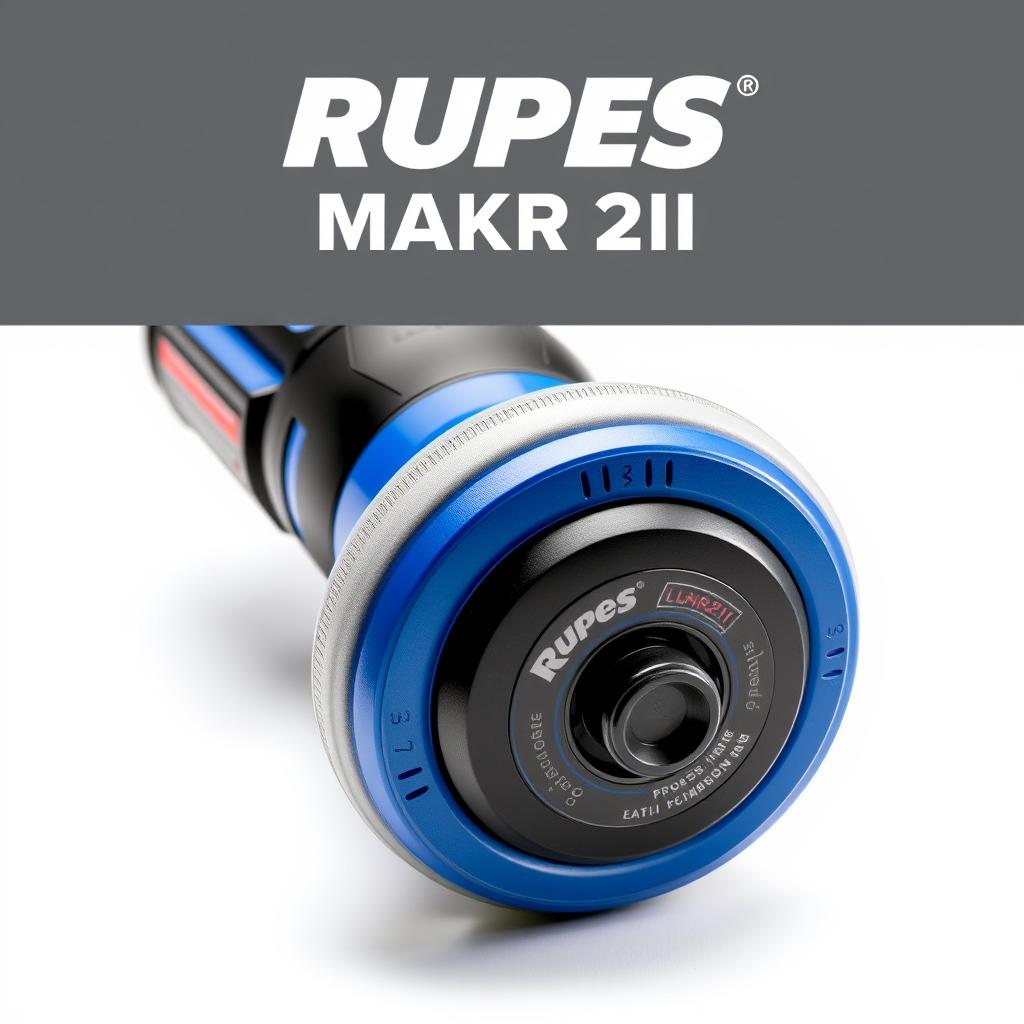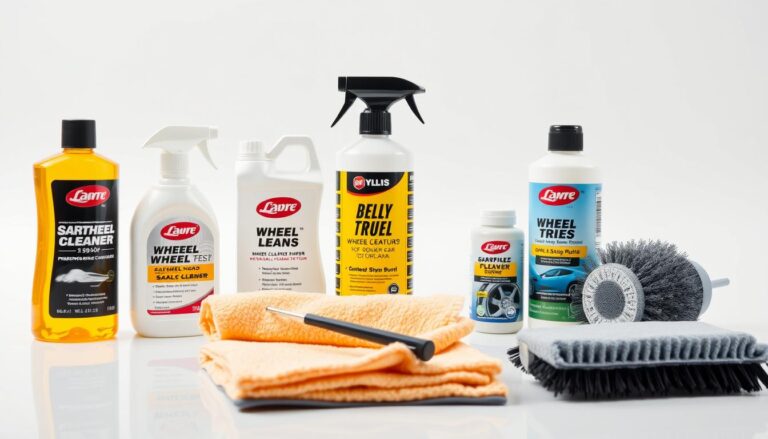Top 10 Best Car Polisher Machines in 2025
As an Amazon Associate, we earn from qualifying purchases.
Finding the right car polisher machine can transform your vehicle detailing from a tedious chore into a satisfying project with professional results. Whether you’re a weekend warrior looking to maintain your car’s shine or a serious enthusiast aiming for showroom-quality finishes, the right polisher makes all the difference.
Today’s market offers everything from beginner-friendly dual-action polishers to professional-grade machines with advanced features. We’ve evaluated the top contenders based on motor power, speed settings, pad compatibility, vibration control, and user feedback to help you find the perfect match for your detailing needs.
Our comprehensive testing focused on real-world performance, considering factors like ease of use, learning curve, paint correction capabilities, and long-term durability. Let’s dive into the best car polisher machines of 2025 to help you achieve that perfect finish without breaking the bank or risking damage to your paint.
| Product Image | Model / Product | Best For | Motor Power | Speed Settings | Pad Compatibility | Price Range | CTA |
| Rupes LHR21 Mark III Editor’s Choice | Professional Detailers | 500W | 6 (3000-4500 OPM) | 6″ foam, wool, microfiber | $$$ | Check Price on Amazon | |
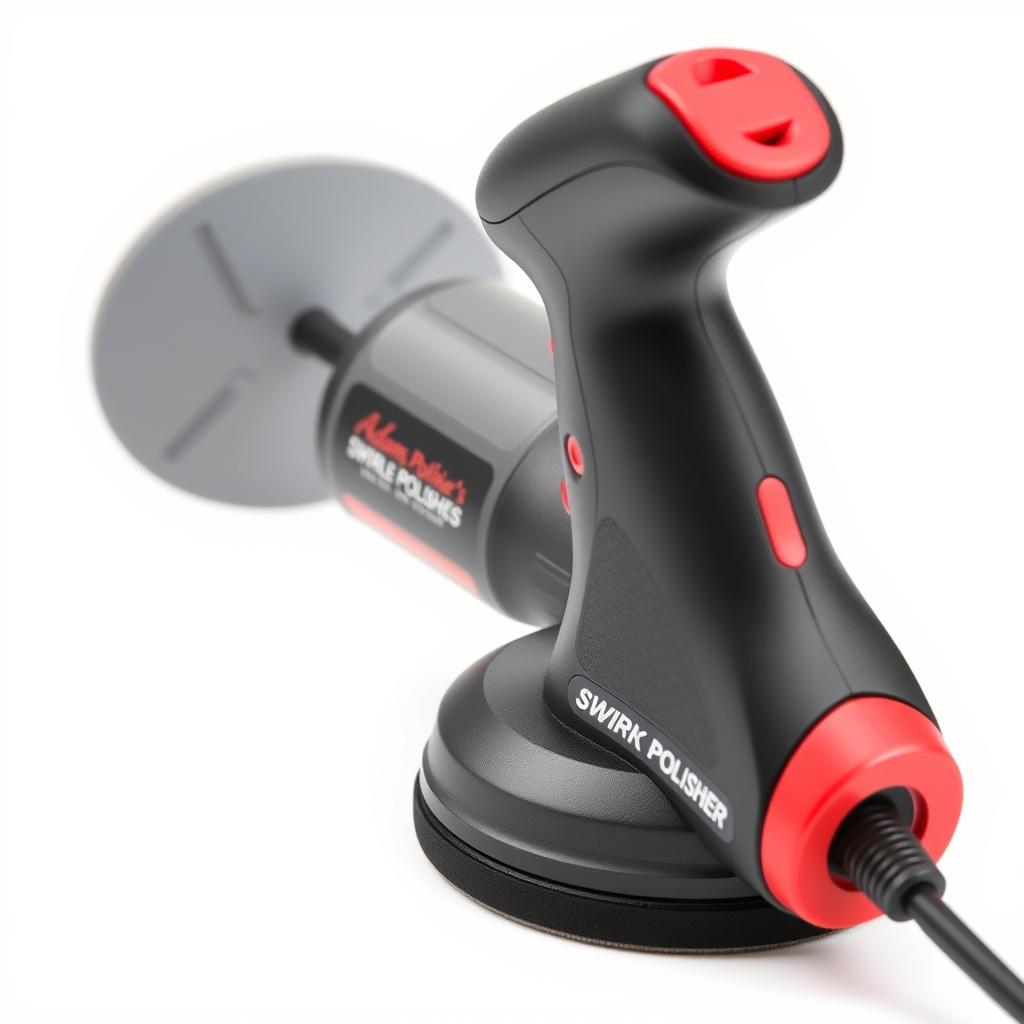 |
Adam’s Polishes Swirl Killer | Enthusiasts | 1000W | 6 (2000-6500 OPM) | 5.5″ hook and loop | $$ | Check Price on Amazon |
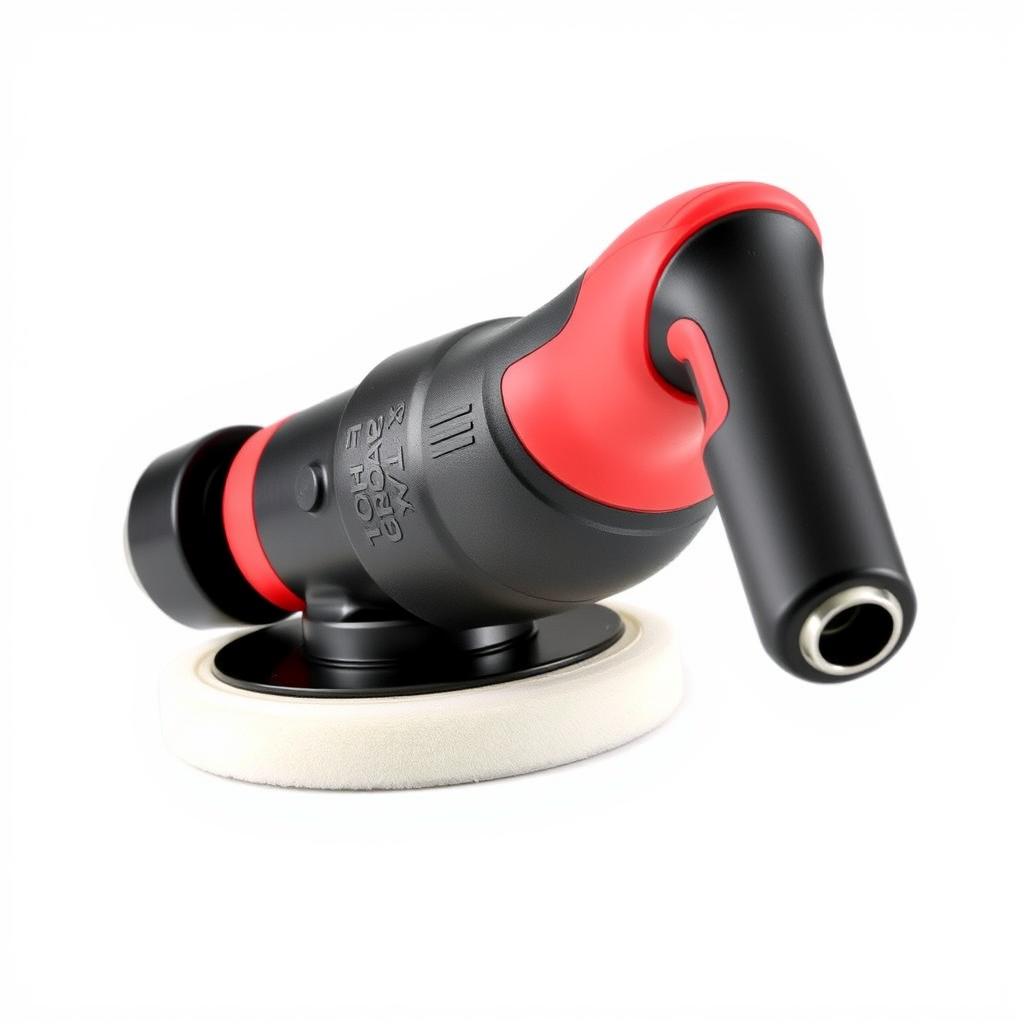 |
Chemical Guys TORQX | Beginners | 700W | 6 (1200-4200 OPM) | 5″-6″ Hex-Logic | $$ | Check Price on Amazon |
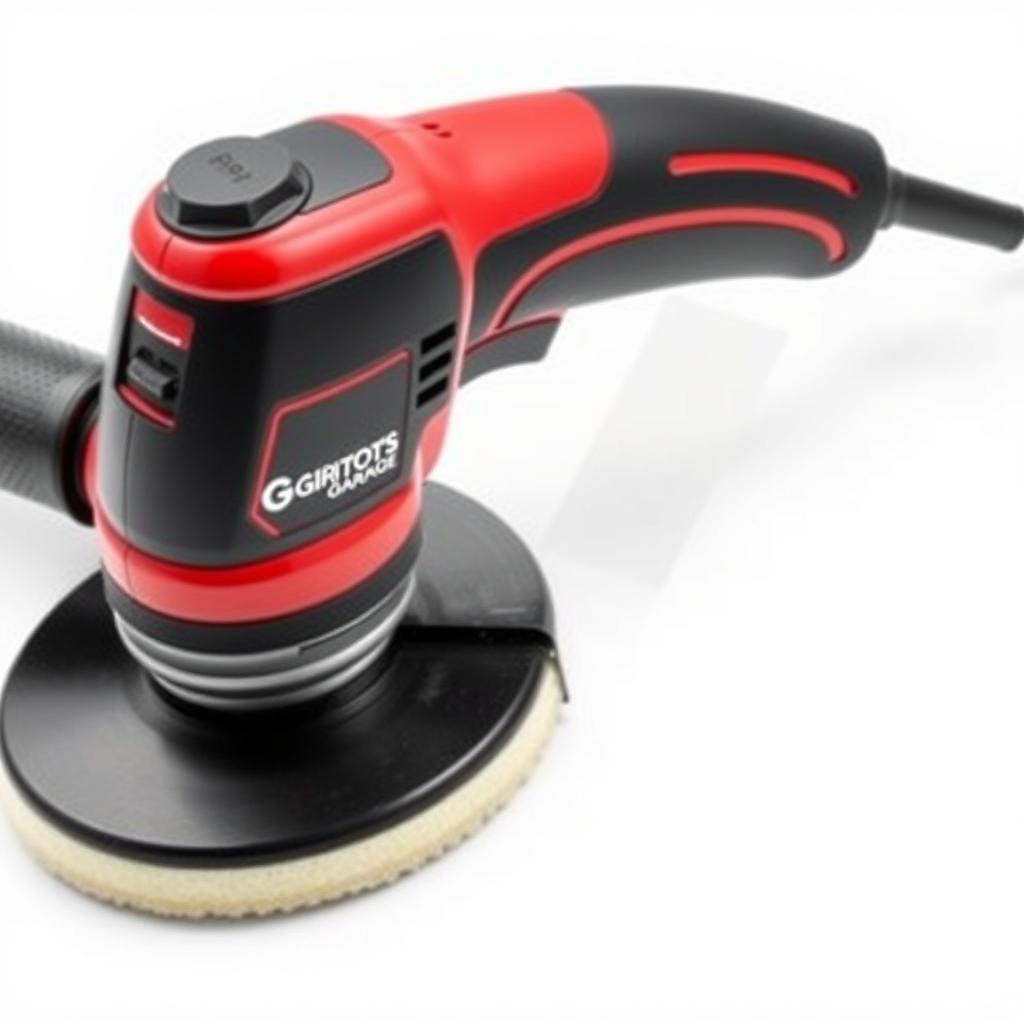 |
Griot’s Garage G9 | Value Seekers | 1000W | 6 (2000-6400 OPM) | 6″ vented orbital | $$ | Check Price on Amazon |
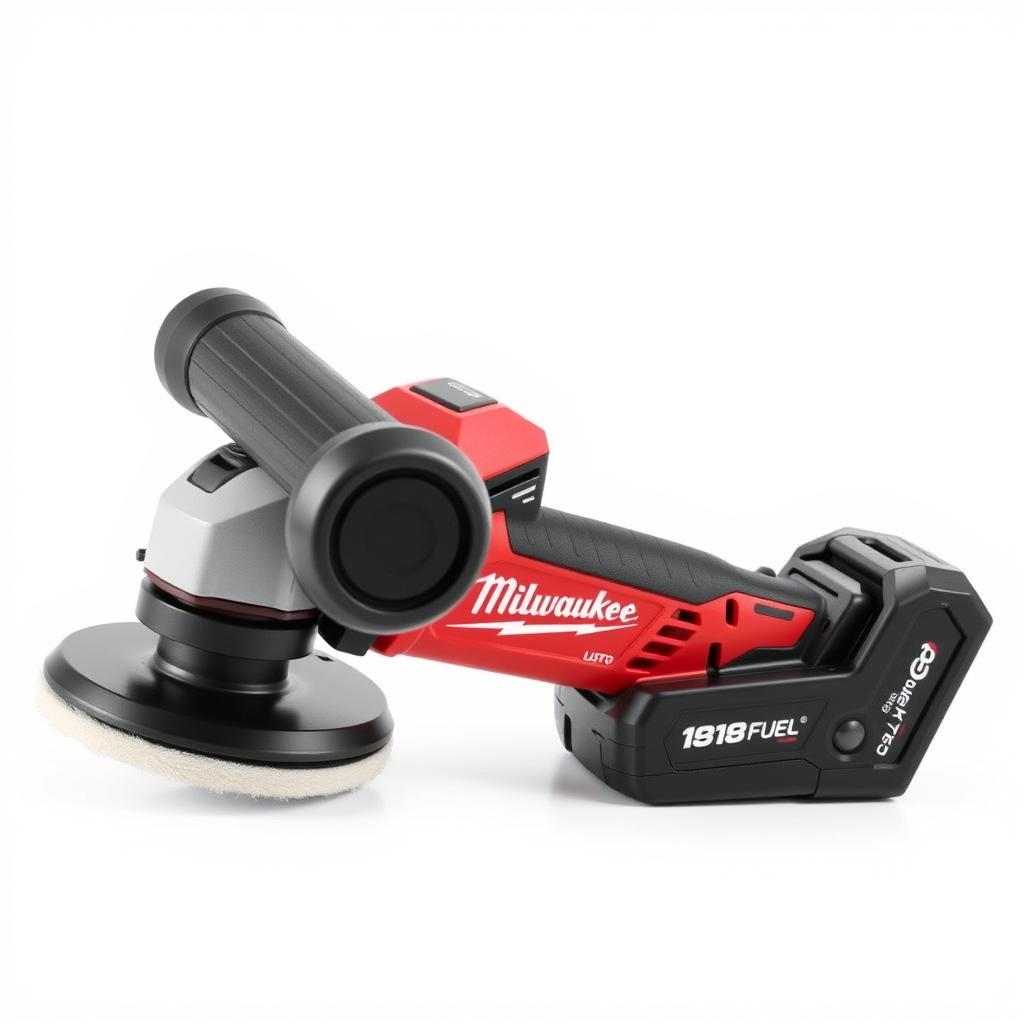 |
Milwaukee M18 FUEL | Cordless Operation | 18V Battery | 8 (0-2200 RPM) | 7″ hook and loop | $$$ | Check Price on Amazon |
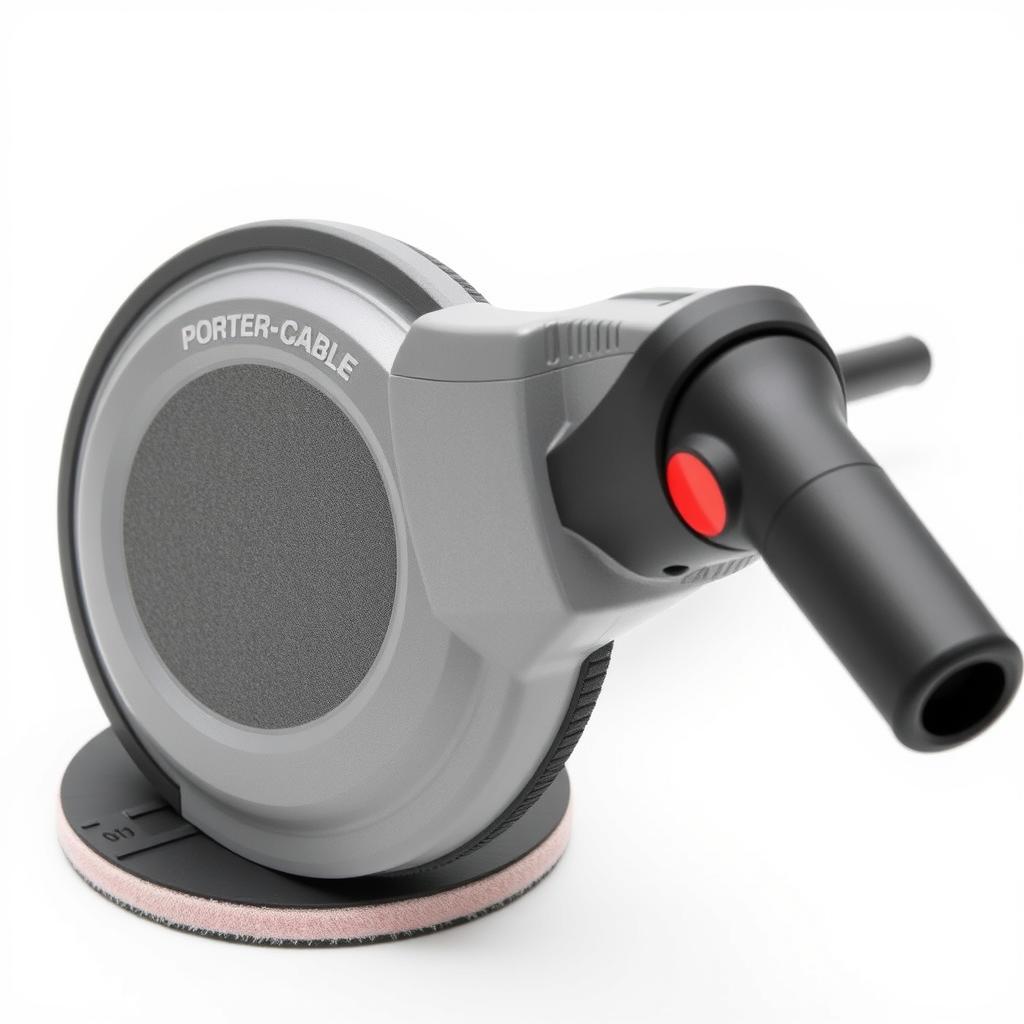 |
Porter-Cable 7424XP | Budget Buyers | 4.5 Amp | 6 (2500-6800 OPM) | 6″ hook and loop | $ | Check Price on Amazon |
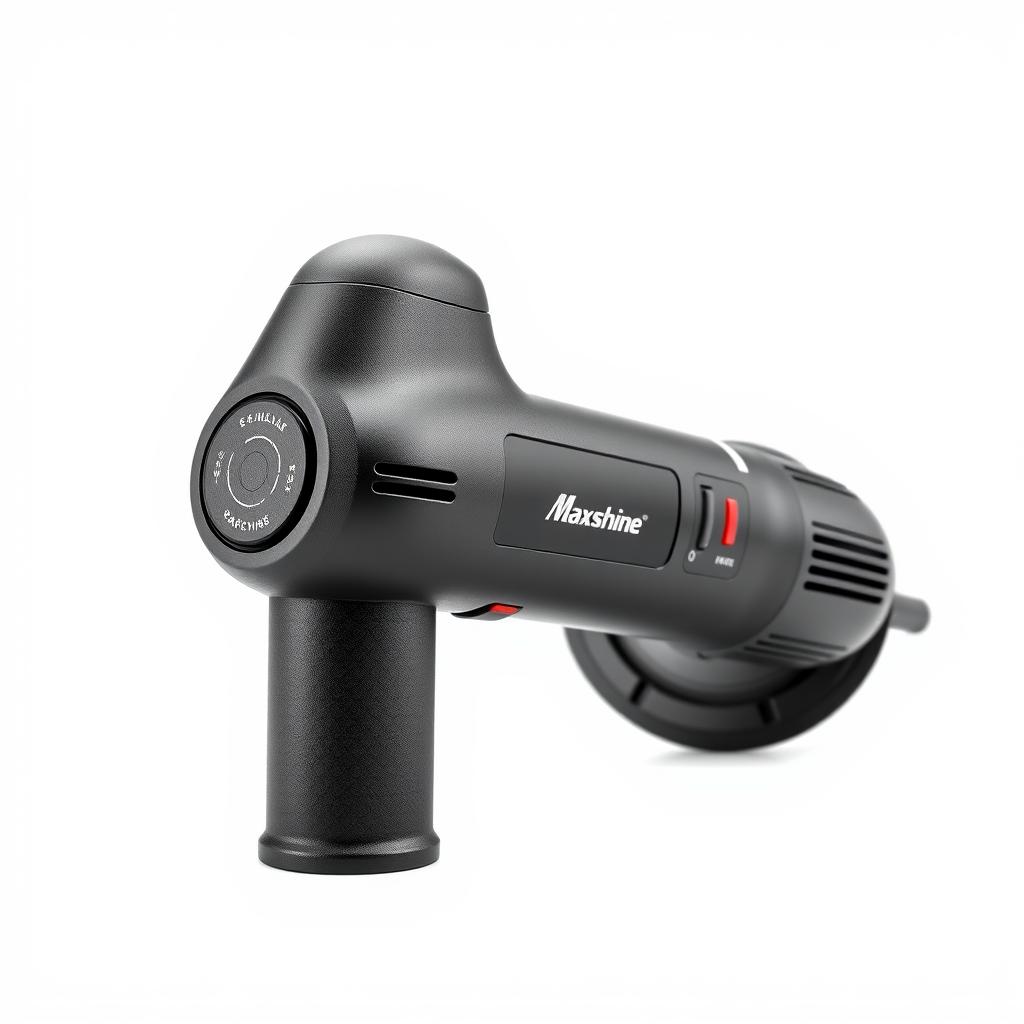 |
Maxshine M21 Pro | Precision Control | 1000W | 6 (2200-5000 OPM) | 5″-6″ hook and loop | $$$ | Check Price on Amazon |
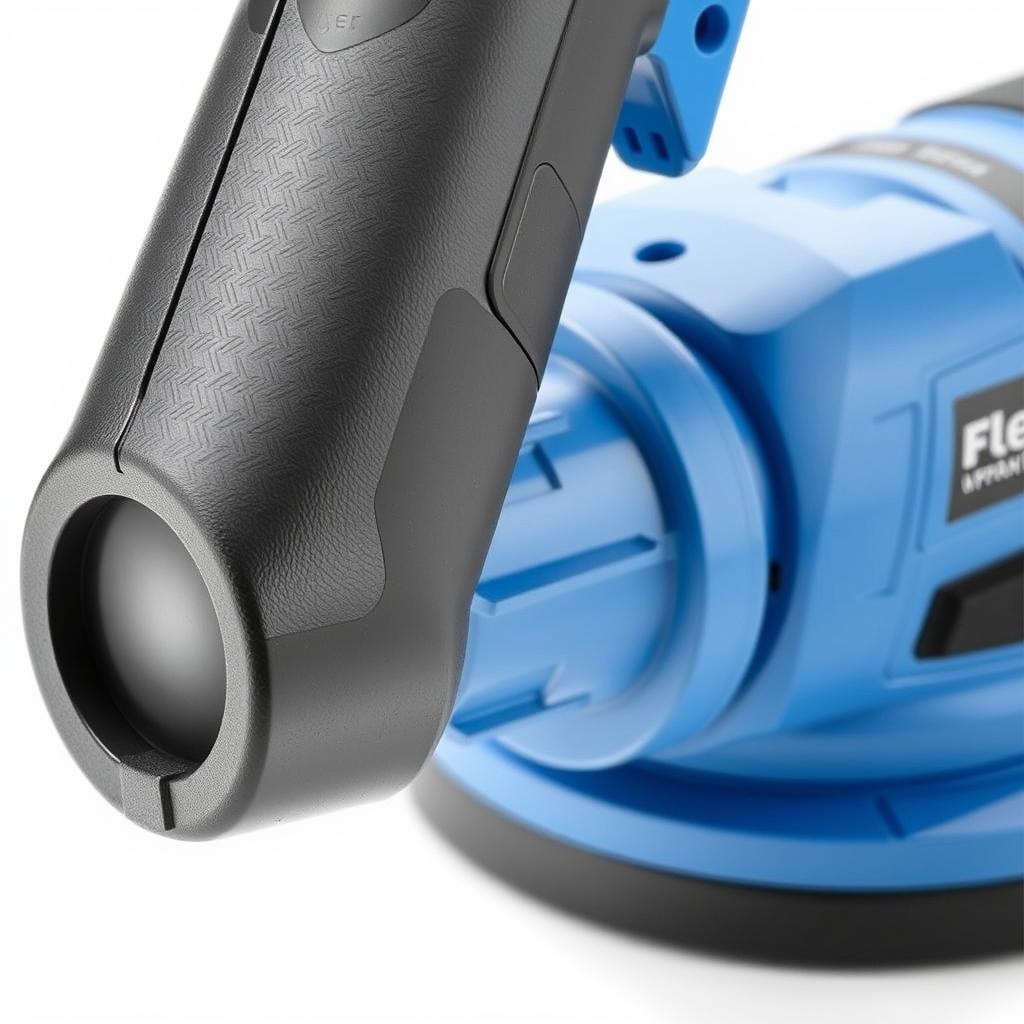 |
Flex XCE 10-8 125 | Premium Quality | 800W | 6 (2900-8600 OPM) | 5″ backing plate | $$$ | Check Price on Amazon |
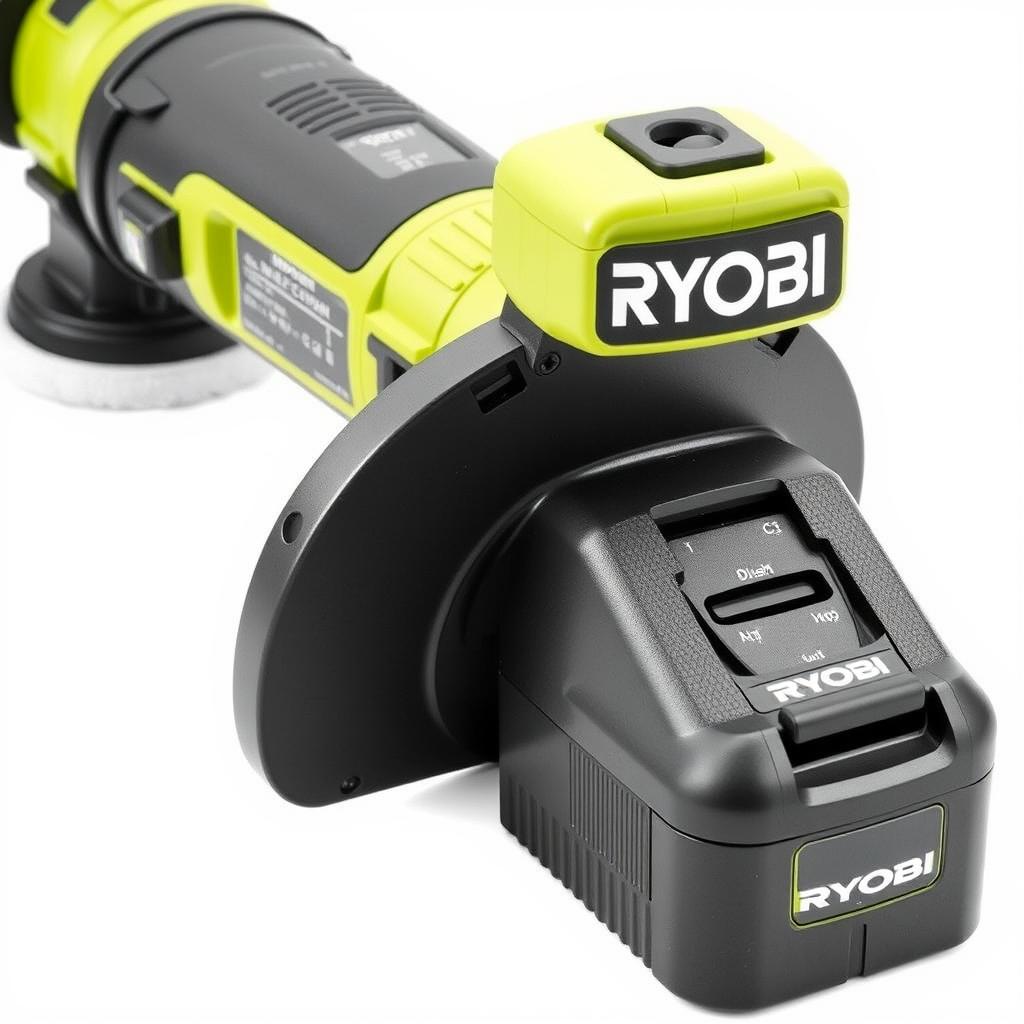 |
Ryobi Variable Speed | DIY Projects | 18V Battery | 6 (3000-7500 OPM) | 6″ hook and loop | $$ | Check Price on Amazon |
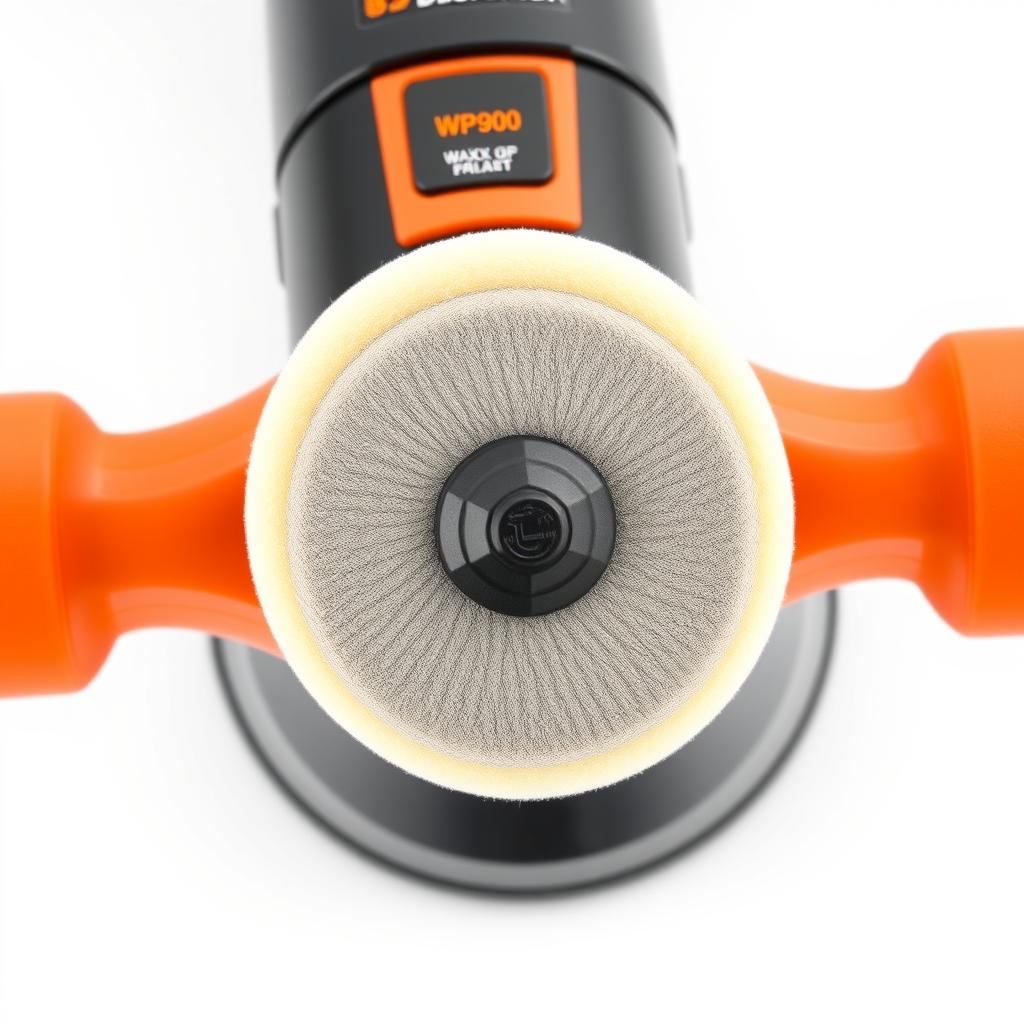 |
Black+Decker WP900 | Occasional Use | 120V | 1 (4400 OPM) | 6″ bonnets | $ | Check Price on Amazon |
Editor’s Choice: Best Car Polisher Machine of 2025
Rupes LHR21 Mark III Buffer Polisher
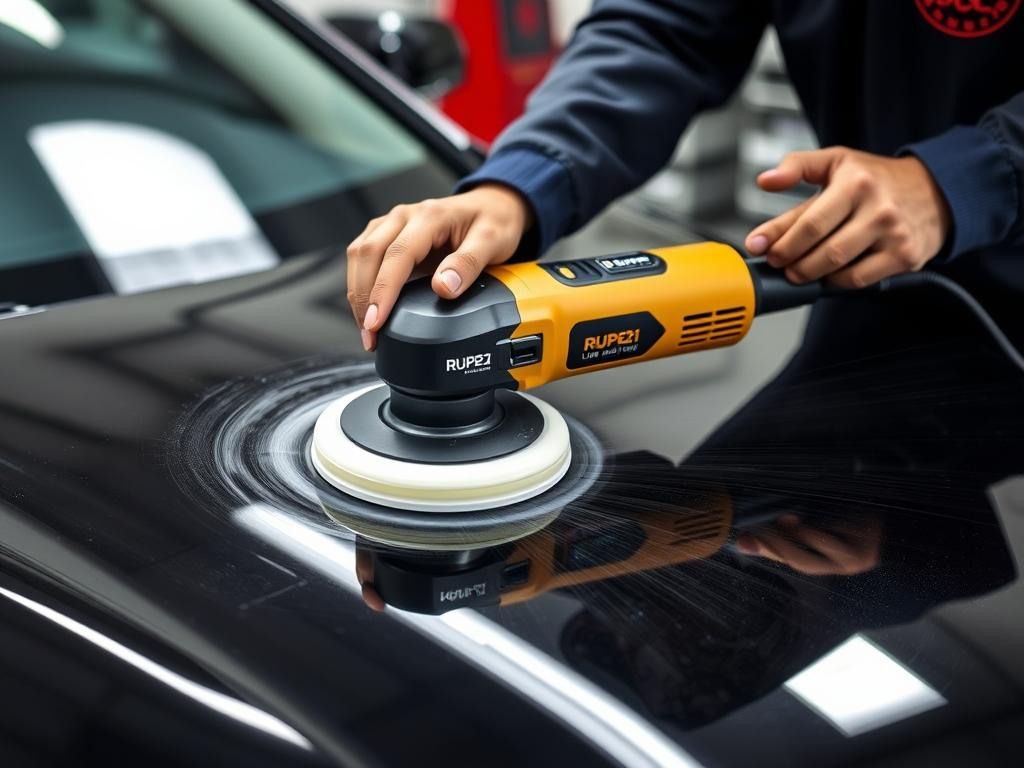
The Rupes LHR21 Mark III stands as the undisputed champion among car polishers in 2025, delivering professional-grade results with remarkable efficiency. Its 21mm orbit throw provides the perfect balance between aggressive correction and fine finishing capabilities, making it suitable for both removing deep swirls and achieving mirror-like final results. What truly sets this Italian-made masterpiece apart is its unparalleled smoothness and vibration control, allowing for hours of fatigue-free operation even during the most demanding detailing sessions.
| 500W | 6 (3000-4500 OPM) |
| 21mm | 30 ft |
| 5.7 lbs | 6″ |
| 6″ foam, wool, microfiber | 1 year |
Pros
- Large 21mm orbit for efficient correction
- Exceptionally smooth operation with minimal vibration
- Premium build quality with excellent heat management
- Extra-long 30-foot power cord for unrestricted movement
- Ergonomic design reduces user fatigue
Cons
- Premium price point may be prohibitive for hobbyists
- Heavier than some competing models
- Replacement parts can be expensive
Professional detailers consistently praise the Rupes LHR21 for its ability to cut through defects quickly while leaving minimal holograms or marring. Many report completing full vehicle corrections in significantly less time compared to other polishers. The machine’s reliability is frequently highlighted, with users noting years of heavy use without mechanical issues. The primary criticism centers on the investment required, though most professionals consider it justified given the time savings and superior results.
How the Editor’s Choice Compares to Runners-Up
The Rupes LHR21 Mark III outperforms its closest competitors with its superior 21mm orbit throw (vs. Adam’s Polishes Swirl Killer’s 9mm and Flex XCE’s 8mm), providing 30-40% faster correction times on large panels. While Adam’s Polishes Swirl Killer offers excellent value with its 1000W motor (compared to Rupes’ 500W), it can’t match the Rupes’ buttery-smooth operation and premium build quality that professionals demand for daily use.
The Flex XCE comes closest in terms of build quality and reliability, but its shorter 8.8-foot power cord (vs. Rupes’ 30-foot) limits workspace flexibility. For professional detailers who work on multiple vehicles daily, the Rupes’ combination of efficiency, ergonomics, and durability justifies its premium price point and earns it our Editor’s Choice designation.
Detailed Reviews of the Best Car Polisher Machines
Adam’s Polishes Swirl Killer 9mm LT Polisher
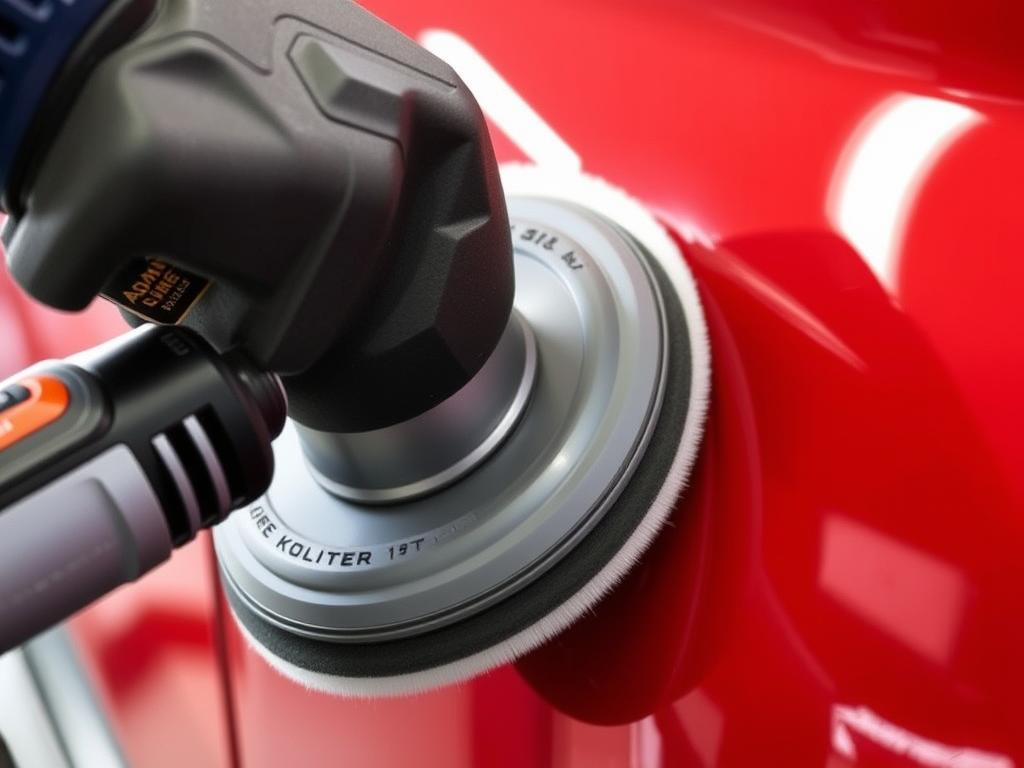
Adam’s Polishes Swirl Killer strikes an impressive balance between professional performance and user-friendly design, making it perfect for enthusiasts who want serious correction capabilities without the learning curve of professional tools. The 9mm orbit throw provides enough cutting power for moderate to severe defect removal while remaining forgiving enough for beginners. What truly distinguishes this polisher is its exceptional ergonomics – the soft rubber handles effectively reduce vibration transfer to your hands, allowing for extended polishing sessions without fatigue.
| 1000W | 6 (2000-6500 OPM) |
| 9mm | 16 ft |
| 6.54 lbs | 5″ |
| 5.5″ hook and loop | 1 year |
Pros
- Powerful 1000W motor handles tough correction jobs
- Vibration-reducing rubber grips enhance comfort
- Strong hook-and-loop backing plate secures pads firmly
- Available in 12″, 15″, and 21″ versions for different needs
- Excellent balance and weight distribution
Cons
- Limited to 5.5″ pads only
- Slightly heavier than some competitors
- Can generate heat during extended use
Users consistently highlight the Swirl Killer’s impressive power-to-weight ratio and its ability to remove moderate defects with minimal passes. Many appreciate the strong pad attachment mechanism, noting that pads stay firmly in place even during high-speed operation. Some users mention that the machine can become warm during extended use, suggesting periodic breaks during marathon detailing sessions. Overall, enthusiasts praise its balance of professional-grade performance with user-friendly operation.
Chemical Guys TORQX Random Orbital Polisher

The Chemical Guys TORQX has established itself as the go-to entry point for beginners venturing into machine polishing, offering a perfect combination of performance, safety, and value. This dual-action polisher delivers enough power for effective paint correction while maintaining the forgiving nature that newcomers need to build confidence. The standout feature is its versatility – with interchangeable backing plates (sold separately), you can easily adapt the TORQX for both large panel work and detailed areas like pillars and bumpers.
| 700W | 6 (1200-4200 OPM) |
| 8mm | 14 ft |
| 8.6 lbs | 5″ |
| 5″-6″ Hex-Logic | 1 year |
Pros
- Excellent entry-level price point
- Compatible with various backing plate sizes
- Long power cord for easy movement around vehicles
- Digital speed control maintains consistent RPMs
- Available in complete kit options with pads and compounds
Cons
- Plastic handle can cause fatigue during extended use
- Heavier than premium competitors
- Moderate vibration at higher speeds
Beginners consistently praise the TORQX for its approachable learning curve and reliable performance. Many users report successfully completing their first paint correction projects without issues, appreciating the machine’s stability and predictable behavior. Some note that the plastic construction can lead to hand fatigue during longer sessions, suggesting taking breaks or upgrading the handle grip. The polisher’s durability is frequently mentioned, with many users reporting years of reliable service despite regular use.
Griot’s Garage G9 Random Orbital Polisher
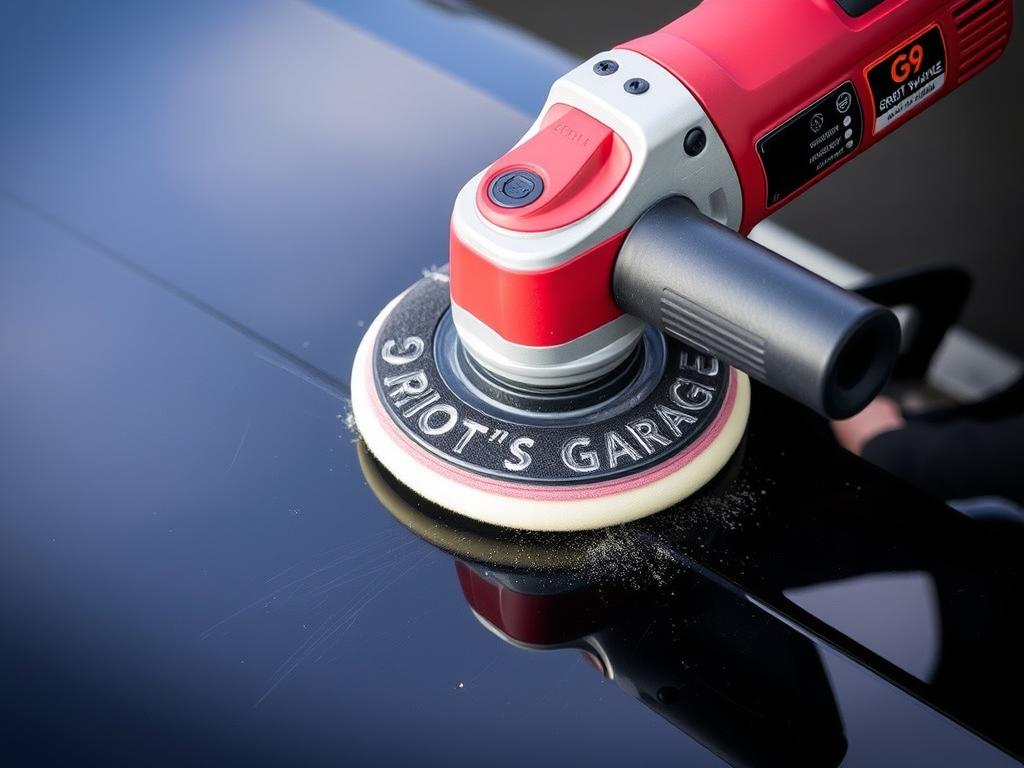
The Griot’s Garage G9 has earned its reputation as the value champion in the car polisher market, offering near-professional performance at a mid-range price point. With its powerful 1000W motor and 9mm orbit, this polisher delivers impressive correction capabilities while remaining accessible to enthusiasts of all skill levels. What truly distinguishes the G9 is its thoughtful design – from the rubber bumper that allows for safe placement between passes to the temperature management system that prevents overheating during marathon detailing sessions.
| 1000W | 6 (2000-6400 OPM) |
| 9mm | 10 ft |
| 5.8 lbs | 6″ vented |
| 6″ hook and loop | Limited lifetime |
Pros
- Powerful 1000W motor handles serious correction
- Temperature management system prevents overheating
- Limited lifetime warranty provides peace of mind
- Ergonomic design with multiple grip points
- Automatic shut-off when excessive pressure is applied
Cons
- Noticeable vibration during extended use
- Doesn’t include pads (sold separately)
- Relatively short 10-foot power cord
Users consistently highlight the G9’s impressive power-to-weight ratio and its ability to tackle even severe paint defects with the right pad and compound combination. Many appreciate the lifetime warranty, noting Griot’s excellent customer service when issues arise. Some users mention experiencing increased vibration after extended use, suggesting taking short breaks during long detailing sessions. The lack of included pads is a common criticism, though many see this as an opportunity to select pads specifically suited to their needs.
Milwaukee M18 FUEL Cordless Polisher
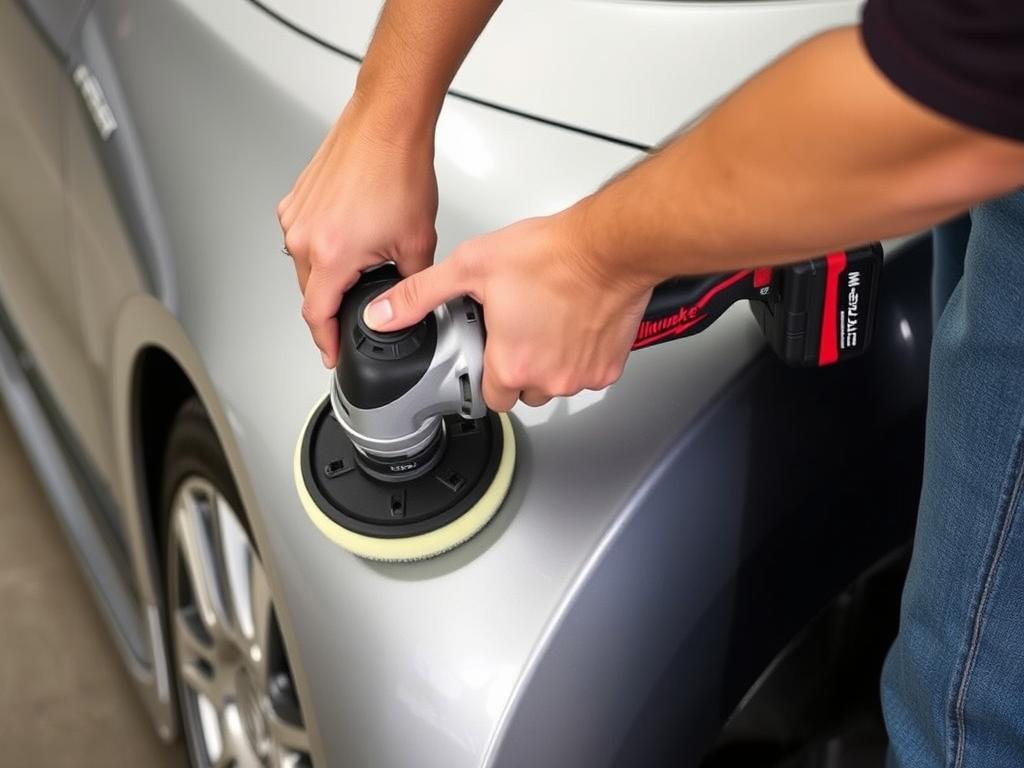
The Milwaukee M18 FUEL represents the pinnacle of cordless polishing technology, liberating detailers from the constraints of power cords without compromising on performance. This professional-grade rotary polisher delivers impressive power and runtime, allowing you to tackle full vehicle corrections without hunting for outlets or managing extension cords. The standout feature is its variable speed trigger combined with a speed dial, giving you precise control over RPM for everything from aggressive cutting to delicate finishing work.
| Brushless | 8 (0-2200 RPM) |
| 18V Li-ion battery | Up to 45 min (heavy use) |
| 6.1 lbs (with battery) | 7″ |
| 7″ hook and loop | 5 years (tool), 3 years (battery) |
Pros
- True cordless freedom with no performance compromise
- Variable speed trigger for precise control
- Compatible with Milwaukee’s extensive M18 battery system
- Lighter than corded rotary polishers
- Excellent build quality and durability
Cons
- Battery and pads not included
- Rotary design requires more skill than dual-action
- Premium price point
- May need multiple batteries for large projects
Professional detailers who have made the switch to the M18 FUEL consistently praise its convenience and performance parity with corded models. Many highlight the machine’s excellent balance and weight distribution, noting that it feels natural in hand despite the battery. Some users recommend purchasing additional batteries for all-day detailing sessions, though most report completing a full vehicle correction on a single charge with careful management. The primary criticism centers on the learning curve associated with rotary polishers, making this better suited for experienced users.
Porter-Cable 7424XP Polisher
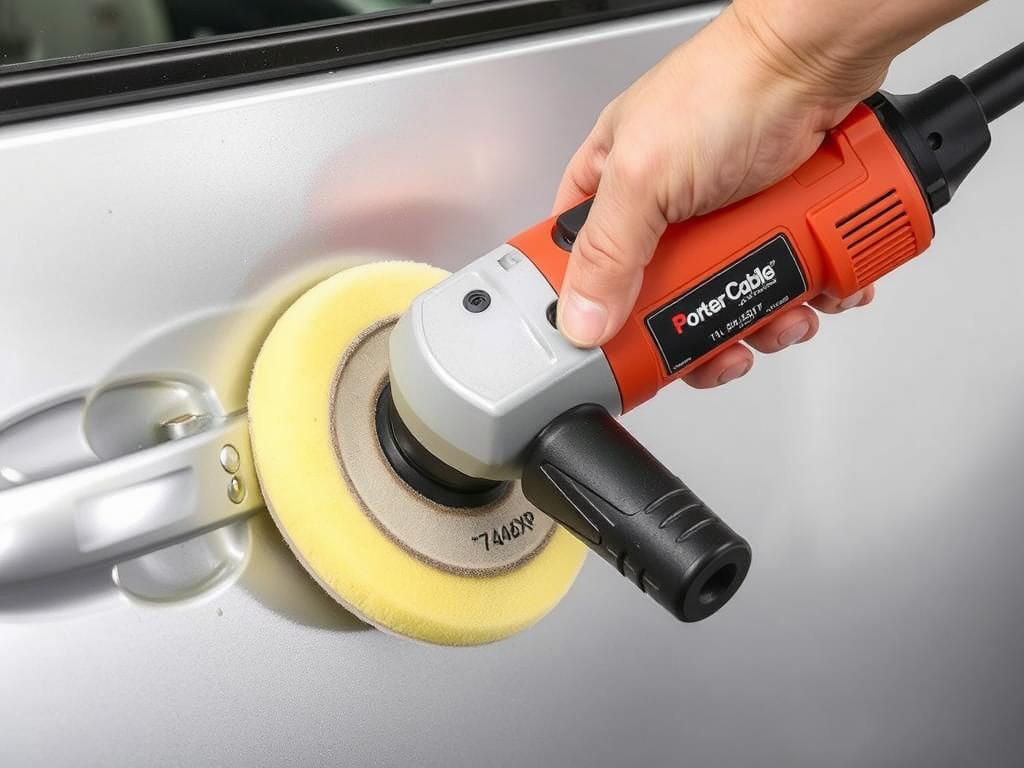
The Porter-Cable 7424XP has achieved legendary status in the detailing community as the gateway polisher that introduced countless enthusiasts to machine polishing. This dual-action workhorse delivers reliable performance at an accessible price point, making it perfect for beginners and weekend warriors. With its 8mm orbit and variable speed control, the 7424XP provides enough correction capability for most common defects while maintaining the forgiving nature that builds confidence in newcomers to machine polishing.
| 4.5 Amp | 6 (2500-6800 OPM) |
| 8mm | 10 ft |
| 5.5 lbs | 6″ |
| 6″ hook and loop | 3 years |
Pros
- Budget-friendly entry point to machine polishing
- Decades of proven reliability and durability
- Lightweight and compact design
- Compatible with 5/16″ thread backing plates
- Excellent community support and tutorials
Cons
- Less powerful than newer competitors
- Noticeable vibration at higher speeds
- Poor quality speed control dial
- Limited correction capability on harder paints
Users consistently praise the 7424XP for its tank-like durability and approachable learning curve. Many report successfully completing their first paint correction projects with this machine, appreciating its forgiving nature that prevents damage even with improper technique. The primary criticisms center on the machine’s vibration at higher speeds and the somewhat vague speed control dial. For beginners and occasional users, these limitations are easily outweighed by the polisher’s reliability and value proposition.
Maxshine M21 Pro Polisher
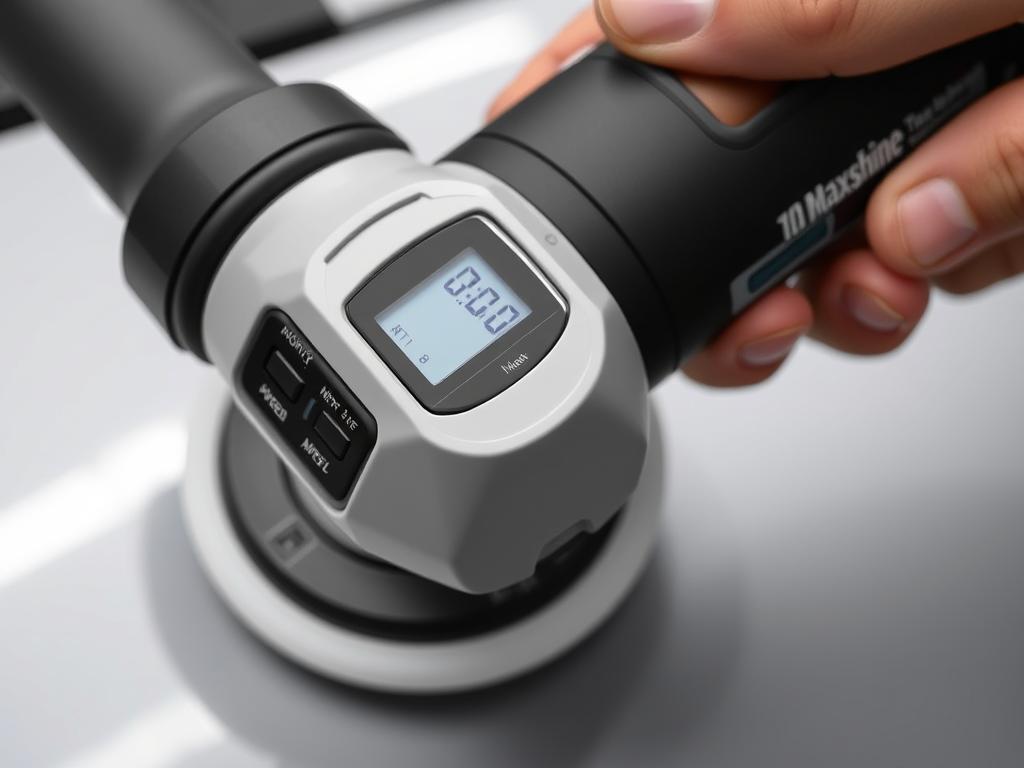
The Maxshine M21 Pro represents the cutting edge of precision control in the polishing world, offering unparalleled adjustability for detailers who demand exact performance parameters. What sets this polisher apart is its innovative half-step speed increments between the standard six settings, effectively doubling your control options for dialing in the perfect speed for any correction scenario. Paired with a responsive variable-speed trigger, the M21 Pro gives experienced detailers the ability to make micro-adjustments on the fly without interrupting their workflow.
| 1000W | 11 (2200-5000 OPM) |
| 21mm | 11 ft |
| 6.7 lbs | 5″ |
| 5″-6″ hook and loop | 1 year |
Pros
- Unprecedented speed control with half-step increments
- Variable-speed trigger for on-the-fly adjustments
- Minimal vibration even during extended use
- Optional handle for better control in tight areas
- Excellent heat management for marathon sessions
Cons
- Premium price point
- Doesn’t include pads (sold separately)
- Louder operation than some competitors
- Steeper learning curve for beginners
Professional detailers who have invested in the M21 Pro consistently praise its precision and control, particularly when working on challenging paints that require exact speed management. Many highlight the machine’s smooth operation and minimal vibration, allowing for extended detailing sessions without fatigue. Some users note that the learning curve is steeper than with simpler polishers, suggesting that beginners might be better served by more straightforward options. The lack of included pads is a common criticism, though most professionals prefer to select their own pad systems.
Flex XCE 10-8 125 Random Orbital Polisher

The Flex XCE 10-8 125 represents German engineering excellence in the detailing world, delivering professional-grade performance with unmatched reliability and precision. This premium polisher combines a powerful 800W motor with an 8mm orbit throw, striking the perfect balance between correction capability and control. What truly distinguishes the Flex from its competitors is its sophisticated electronics package, featuring a 7-function microprocessor that monitors everything from temperature to power interruption, ensuring consistent performance and protecting both the tool and your vehicle.
| 800W | 6 (2900-8600 OPM) |
| 8mm | 8.8 ft |
| 5.8 lbs | 5″ |
| 5″ hook and loop | 2 years |
Pros
- Superior build quality and durability
- 7-function microprocessor for safety and performance
- Excellent heat management for continuous operation
- Wide speed range (2900-8600 OPM)
- Smooth, low-vibration operation
Cons
- Premium price point
- Relatively short power cord (8.8 ft)
- Replacement parts can be expensive
- Limited backing plate options
Professional detailers who have invested in the Flex XCE consistently praise its reliability and precision, particularly when working on high-end vehicles where consistency is paramount. Many highlight the machine’s excellent heat management, allowing for extended correction sessions without performance degradation. Some users note that the relatively short power cord can be limiting in professional settings, recommending a quality extension cord as a companion purchase. Despite the premium price, most professionals consider the Flex a worthwhile investment due to its longevity and consistent performance.
Ryobi Variable Speed Dual Action Polisher

The Ryobi Variable Speed Dual Action Polisher brings cordless convenience to the dual-action polisher category, making it perfect for DIY enthusiasts who value flexibility and ease of use. Unlike the Milwaukee M18 FUEL’s rotary design, Ryobi’s dual-action approach offers a more forgiving experience that’s ideal for beginners while still delivering respectable correction capabilities. The standout feature is its integration with Ryobi’s extensive 18V ONE+ battery system, allowing you to share batteries between your polisher and other Ryobi tools in your garage.
| Brushed | 6 (3000-7500 OPM) |
| 18V Li-ion battery | Up to 35 min (moderate use) |
| 5.2 lbs (with battery) | 6″ |
| 6″ hook and loop | 3 years |
Pros
- Cordless convenience with dual-action safety
- Compatible with all Ryobi 18V ONE+ batteries
- Kit includes battery and charger
- Adjustable handle with multiple positions
- Lightweight design reduces fatigue
Cons
- Less powerful than corded alternatives
- Brushed motor is less efficient than brushless
- Limited runtime for large projects
- Moderate vibration at higher speeds
DIY enthusiasts consistently praise the Ryobi polisher for its convenience and ease of use, particularly appreciating the freedom from managing power cords. Many users report successfully completing single-vehicle polishing jobs on a single battery charge, though some recommend having a spare battery for larger projects. The primary criticisms center on the machine’s power limitations compared to corded models, with some users noting that correction of severe defects requires more passes. For weekend warriors who prioritize convenience and already own Ryobi tools, this polisher offers excellent value.
Black+Decker WP900 Waxer/Polisher

The Black+Decker WP900 represents the most accessible entry point into the world of machine polishing, offering a simple, no-frills approach to vehicle maintenance. Unlike the more advanced dual-action polishers on our list, the WP900 is primarily designed for applying and removing waxes and light polishes rather than serious paint correction. Its straightforward single-speed operation and traditional two-handle design make it immediately familiar to first-time users, eliminating the learning curve associated with more complex machines.
| 120V | 1 (4400 OPM) |
| Random orbital | 10 ft |
| 3.7 lbs | 6″ |
| 6″ bonnets | 2 years |
Pros
- Extremely budget-friendly
- Simple operation with no learning curve
- Lightweight design reduces fatigue
- Includes both foam and wool bonnets
- Quiet operation compared to more powerful models
Cons
- Limited to waxing and light polishing
- Single speed offers no adjustability
- Bonnet-style pads are less effective than foam pads
- Can “walk” during operation
Casual users consistently praise the WP900 for its simplicity and effectiveness at applying and removing waxes. Many appreciate its lightweight design and straightforward operation, noting that it significantly reduces the time and effort required for waxing compared to hand application. The primary criticisms center on the machine’s limitations for paint correction, with users noting that it lacks the power and pad options needed for removing scratches and swirls. For occasional maintenance of vehicles with good paint condition, this affordable polisher offers excellent value.
How to Choose the Best Car Polisher Machine for Your Needs
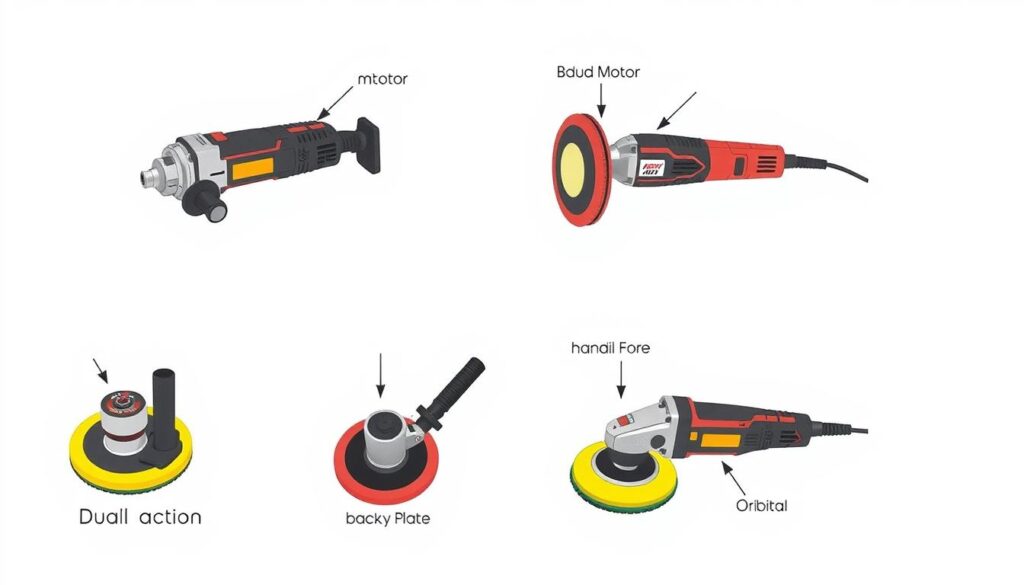
Understanding Polisher Types
Dual-Action (DA) Polishers
Dual-action polishers combine rotary and orbital movements, creating a random pattern that prevents heat buildup and reduces the risk of paint damage. The backing plate both spins and oscillates, mimicking hand polishing but with greater efficiency.
Best for: Beginners, enthusiasts, and professionals seeking a safe, versatile tool for most correction tasks.
Key attribute: Orbit throw (5-21mm) – Larger throws remove defects faster but require more skill to control.
Rotary Polishers
Rotary polishers spin in a fixed circular motion, generating more heat and cutting power. They excel at heavy correction but carry a higher risk of burning through paint or creating holograms.
Best for: Professionals and experienced users tackling severe defects or working on large areas.
Key attribute: RPM range (typically 600-3500 RPM) – Higher speeds for cutting, lower for finishing.
Critical Performance Attributes
Motor Power
- 500-700W: Entry-level, suitable for occasional use
- 700-900W: Mid-range, good for enthusiasts
- 900W+: Professional-grade, handles demanding corrections
Higher wattage translates to more torque, allowing the polisher to maintain speed under load – crucial when working on harder paints or larger vehicles.
Speed Settings
- OPM (Orbits Per Minute): For dual-action polishers (2000-8000 OPM)
- RPM (Revolutions Per Minute): For rotary polishers (600-3500 RPM)
- Variable Speed: Essential for different correction phases
Multiple speed settings allow you to adjust for different tasks: lower speeds for compounding and cutting, medium for polishing, and higher speeds for finishing and waxing.
Orbit Throw
- 8-10mm: Standard throw, balanced performance
- 15mm: Medium throw, faster correction
- 21mm: Long throw, maximum efficiency on large panels
Larger orbit throws remove defects faster but can be harder to control, especially in curved areas. Smaller throws offer more precision but require more passes for correction.
Ergonomics and Usability
Weight and Balance
Polisher weight ranges from 3-9 lbs, with most quality models between 5-7 lbs. Heavier machines can provide stability but cause fatigue during extended use. Balance is equally important – a well-balanced polisher distributes weight evenly, reducing strain on your wrists and arms.
Recommendation: For beginners or those planning long sessions, prioritize machines under 6 lbs with ergonomic grips.
Vibration Control
Excessive vibration is the enemy of precision and comfort. Quality polishers incorporate counterweights and vibration-dampening materials to provide smoother operation. Lower vibration means less fatigue, better control, and more consistent results.
Recommendation: Look for rubber-coated handles and counterbalanced designs, particularly if you plan extended detailing sessions.
Pad Compatibility and Versatility
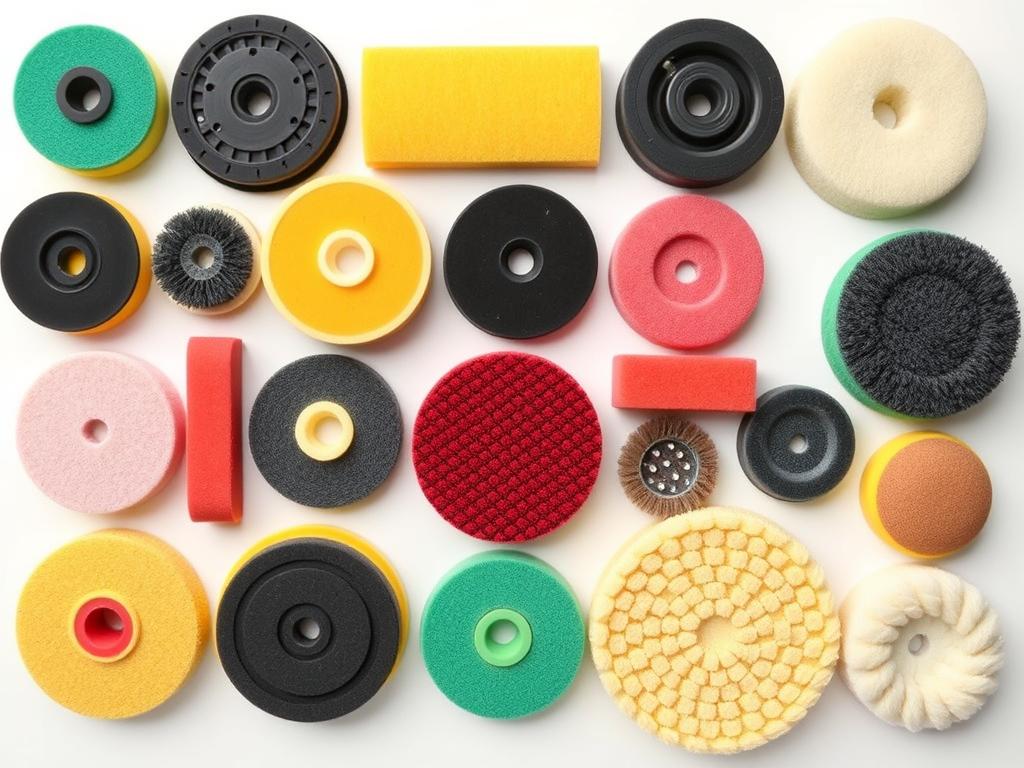
The backing plate size determines which pads your polisher can use, directly affecting its versatility and performance:
| Backing Plate Size | Pad Sizes | Best For |
| 3″ | 3.5″-4″ | Tight spaces, pillars, bumpers |
| 5″ | 5.5″-6″ | General purpose, most vehicle panels |
| 6″ | 6.5″-7″ | Large, flat panels (hoods, roofs) |
Recommendation: For maximum versatility, choose a polisher that accepts multiple backing plate sizes. A 5″ backing plate with 5.5″ pads offers the best balance between coverage and control for most users.
Corded vs. Cordless Considerations
Corded Polishers
- Consistent power without runtime limitations
- Generally more powerful for the price
- No battery investment or management
- Typically lighter without battery weight
Cordless Polishers
- Freedom of movement without cord management
- Ideal for areas without power access
- No risk of cord damage to fresh paint
- Often share batteries with other tools
Recommendation: For most home users, a quality corded polisher offers the best performance-to-price ratio. Consider cordless only if you frequently detail in areas without power access or already own compatible batteries.
Price vs. Performance Considerations
Budget ($50-$150)
- Entry-level dual-action polishers
- Suitable for occasional use
- Basic features and construction
- May have more vibration and noise
Best for: Beginners, occasional detailers, and those testing the waters before investing in premium equipment.
Mid-Range ($150-$250)
- Enhanced power and durability
- Better ergonomics and vibration control
- Multiple speed settings with better control
- Often include quality backing plates
Best for: Enthusiasts who detail regularly and want reliable performance without professional-level investment.
Premium ($250+)
- Professional-grade construction
- Advanced features (temperature monitoring, etc.)
- Superior balance and ergonomics
- Extended warranties and service support
Best for: Professionals, serious enthusiasts, and those who value maximum efficiency and comfort during extended use.
When premium pays off: If you detail multiple vehicles regularly, the time savings and reduced fatigue from a premium polisher can justify the higher investment. Professional-grade machines also tend to last significantly longer, offering better value over time despite higher upfront costs.
Frequently Asked Questions About Car Polisher Machines
Which car polisher is best for beginners?
For beginners, dual-action polishers like the Chemical Guys TORQX or Porter-Cable 7424XP are ideal starting points. These machines combine safety (minimal risk of paint damage) with enough power for effective correction. The dual-action movement prevents heat buildup and automatically stops rotating if too much pressure is applied, making them forgiving for those developing their technique. Look for models with 8-10mm orbit throws, which offer a good balance between correction speed and ease of control.
Is 750W enough power for a car polisher?
Yes, 750W provides sufficient power for most detailing tasks, including moderate defect correction. This power level offers a good balance between performance and control, allowing the polisher to maintain speed under load without becoming too aggressive. For context, entry-level polishers typically range from 500-700W, while professional-grade machines often exceed 900W. If you’re working primarily on harder European clear coats or doing heavy correction, you might benefit from higher wattage (800W+), but for most enthusiasts, 750W is more than adequate.
Do cordless polishers have enough runtime for a full vehicle?
Modern cordless polishers can typically complete a medium-sized vehicle on a single battery charge with careful management. Premium models like the Milwaukee M18 FUEL offer 30-45 minutes of runtime under load, which is sufficient for polishing most panels. However, for full paint correction (compounding, polishing, and finishing), you’ll likely need a second battery. Battery life varies significantly based on:
- Battery capacity (4.0Ah vs. 5.0Ah makes a substantial difference)
- Speed settings used (higher speeds drain batteries faster)
- Paint hardness (harder paints require more pressure, reducing runtime)
- Ambient temperature (extreme heat or cold affects battery performance)
For professional use or all-day detailing sessions, corded polishers still offer the advantage of uninterrupted power.
What’s the difference between OPM and RPM in polisher specifications?
OPM (Orbits Per Minute) and RPM (Revolutions Per Minute) measure different aspects of polisher movement:
- OPM: Used for dual-action/random orbital polishers, measuring how many times the backing plate completes its orbital pattern per minute. Typical ranges are 2000-8000 OPM.
- RPM: Used for rotary polishers, measuring how many complete rotations the backing plate makes per minute. Typical ranges are 600-3500 RPM.
While they sound similar, they represent fundamentally different movements. Dual-action polishers combine rotation with oscillation in a random pattern (measured in OPM), while rotary polishers spin in a fixed circular motion (measured in RPM). This distinction is important because rotary polishers generate more heat and cutting power at equivalent numerical settings.
Which car polisher works with 6″ pads?
Most dual-action polishers on our list work with 6″ pads, including the Griot’s Garage G9, Porter-Cable 7424XP, and Chemical Guys TORQX. These machines typically come with 5″ or 6″ backing plates that accommodate 5.5″ to 6.5″ pads. The backing plate should always be slightly smaller than the pad to prevent edge contact with the paint. When choosing a polisher for 6″ pads, verify:
- The backing plate diameter (should be 5″ or 5.5″ for 6″ pads)
- The attachment system (hook-and-loop/Velcro is most common)
- The thread size if you plan to use aftermarket backing plates
For maximum versatility, consider polishers like the Chemical Guys TORQX that offer interchangeable backing plates for different pad sizes.
How long does it take to polish a car with a machine?
Polishing a complete vehicle typically takes 3-8 hours depending on several factors:
- Vehicle size: Compact cars (3-4 hours), mid-size (4-6 hours), large SUVs/trucks (6-8+ hours)
- Paint condition: Light enhancement (2-3 hours), moderate correction (4-6 hours), severe correction (8+ hours)
- Polisher type: Long-throw DA polishers work faster on large panels than standard orbital polishers
- Experience level: Professionals work 30-50% faster than beginners
These estimates assume a single-stage polish. Multi-stage corrections (compounding, polishing, and finishing) can take significantly longer. For beginners, it’s best to allocate a full day for your first polishing project to avoid rushing and potentially making mistakes.
Can I damage my car’s paint with a dual-action polisher?
Dual-action polishers are designed to be safe for beginners, but paint damage is still possible under certain conditions:
- Using too aggressive a pad/compound combination
- Applying excessive pressure (let the machine do the work)
- Working on extremely thin paint or edges without proper technique
- Polishing over sharp edges or raised body lines
- Using high speeds on a stationary position for extended periods
To minimize risk, start with the least aggressive pad/polish combination that might work, keep the polisher moving at all times, use light pressure, and avoid edges and body lines until you’ve developed more experience. Most dual-action polishers have a clutch mechanism that stops rotation if too much pressure is applied, providing an additional safety feature for beginners.
Conclusion: Finding Your Perfect Car Polisher Machine
After thoroughly testing and evaluating the top car polisher machines of 2025, it’s clear that the right choice depends on your specific needs, experience level, and budget. Here’s a summary of our top recommendations by use case:
Best for Professionals
- Premium Choice: Rupes LHR21 Mark III
- Value Option: Flex XCE 10-8 125
- Cordless Pick: Milwaukee M18 FUEL
Professional detailers should prioritize efficiency, durability, and consistent performance – areas where our premium picks excel despite their higher price points.
Best for Enthusiasts
- All-Around Performer: Adam’s Polishes Swirl Killer
- Value Champion: Griot’s Garage G9
- Precision Option: Maxshine M21 Pro
Serious enthusiasts benefit from machines that balance professional features with more accessible price points, offering excellent performance for regular but not daily use.
Best for Beginners
- Learning Tool: Chemical Guys TORQX
- Budget Option: Porter-Cable 7424XP
- Occasional Use: Black+Decker WP900
Newcomers should focus on forgiving, dual-action machines that minimize the risk of paint damage while they develop their technique and confidence.
When making your final decision, consider not just the initial purchase price but the complete ecosystem – backing plates, pads, compounds, and accessories that you’ll need to achieve your desired results. A mid-range polisher with quality pads often outperforms a premium machine with basic accessories.
Remember that technique matters as much as equipment. Even the most advanced polisher requires proper technique to achieve professional results. Take time to learn proper machine handling, pad selection, and product application regardless of which polisher you choose.
Ready to Transform Your Vehicle’s Finish?
Browse our top-rated car polisher machines and find the perfect match for your detailing needs and skill level.

